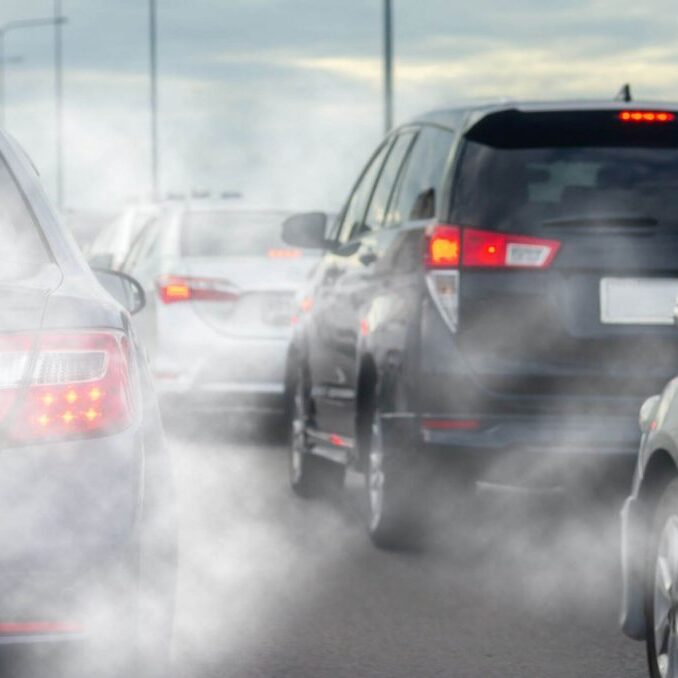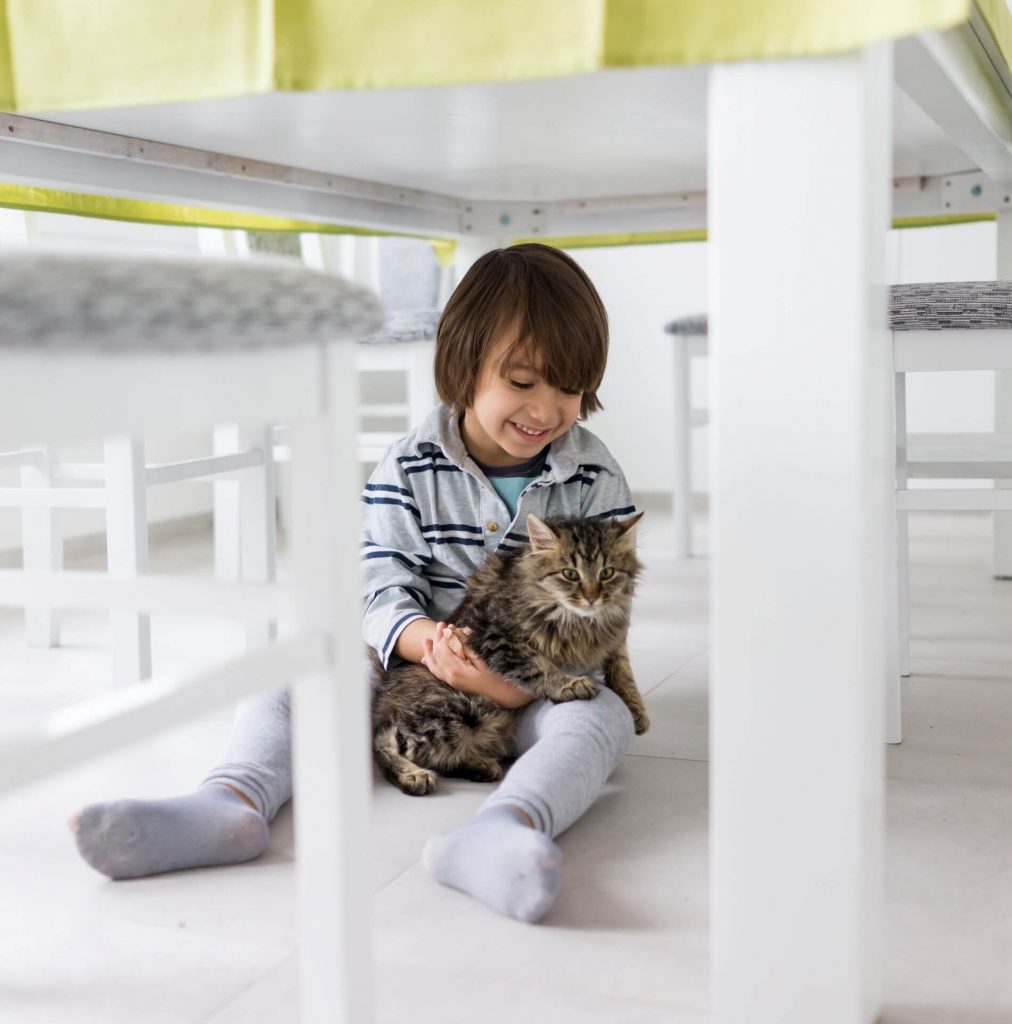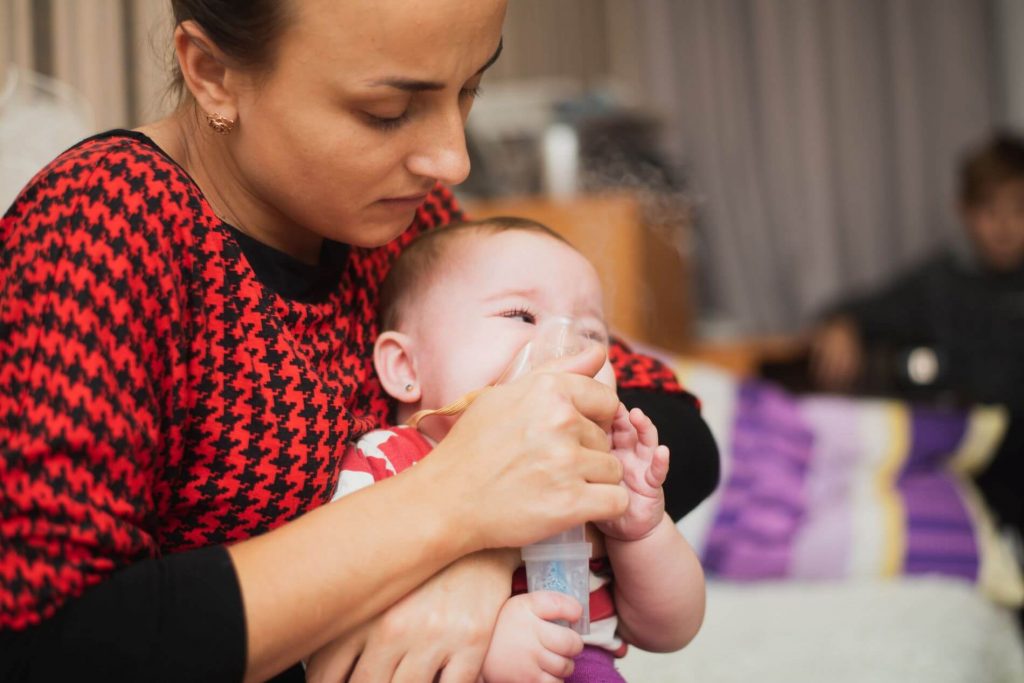Explore this page: How to Protect Children | Reduce Asthma Triggers | Our Programs | Our Researchers
What is asthma?
Asthma is a chronic lung disease that causes the airways to be inflamed, leaving less room for air to move through the lungs. This can cause trouble breathing and attacks of coughing, wheezing and chest tightness. Asthma leads to mucus in the lungs.
An asthma attack involves squeezing of the muscle bands around the airways, making it difficult to breathe. Left untreated, asthma attacks are dangerous and can lead to death. While asthma cannot be cured, it can be managed with medication prescribed by your child’s doctor, eliminating asthma triggers at home, and following your child’s Asthma Action Plan.
Every child has their own set of asthma symptoms before an asthma attack.


Why is there so much asthma in the Philadelphia region?
According to the Centers for Disease Control and Prevention, 5.8% of children in the U.S. have asthma. This rate is more than triple for Philadelphia children, with an asthma prevalence rate of 21%. In 2020, non-Hispanic Black and Hispanic children had over 4 times more asthma related hospitalizations in Philadelphia compared to non-Hispanic White children.
Asthma disparities may be explained by a combination of genetics and social determinants of health which include where children live, grow, learn and play. Indoor and outdoor air pollution both contribute to the high prevalence of asthma in the Philadelphia Region. Extreme weather is expected to increase air pollution which can worsen asthma. Higher temperatures also increase the risk of mold, a common asthma trigger.
You can sign up for alerts on the air quality in your area by visiting airnow.gov to see when it is best to avoid playing outside during days with higher levels of air pollution in the air.
What can I do to protect my child?
If you suspect asthma, your first step will be to take your child to the doctor. They may make an asthma diagnosis and develop your child’s Asthma Action Plan . Make sure your child is taking their medication correctly as prescribed by their doctor.
Additionally, avoiding asthma triggers can prevent future asthma attacks. An asthma trigger is anything that can start an asthma attack. Each child will have different triggers.
Video Resources

Common asthma triggers:
- Dust mites: They mostly live in bedding and can make asthma worse. Your child may be exposed to dust mites from carpets, mattresses, pillows, stuffed toys, bedcovers and upholstered furniture.
- Smoke
- Animals with fur or feathers
- Pests like cockroaches and rodents
- Physical activity
- Pollen
- Weather changes
- Colds and viruses
- Strong smells and fragrances, particularly in sprays
- Mold
- Laughing hard, crying or yelling
Ways to reduce exposure to asthma triggers
Find out how you can make a difference in your child's health with these quick tips. Click the circle icons to view each tip.

Never smoke in your home or areas where your child will be. The chemicals from smoke settle on surfaces and can trigger an asthma attack.
If you smoke, only smoke outside the home. Secondhand, and even thirdhand smoke (chemicals and nicotine that settle on surfaces), can trigger an asthma attack.
Wash bedding and fabric toys once a week in hot water
Use a HEPA vacuum to clean your carpets at least once a week.
Regularly mop floors and wipe surfaces with a damp cloth.
Avoid using cleaning products that have a strong smell. See this website for alternatives.
Fix any leaks and keep food in tightly sealed containers to discourage pests.
Urine, feces, saliva, hair and body parts from roaches and rodents are known asthma triggers. If you have pests, never use foggers or bug bombs. Use asthma friendly methods in getting rid of pests such as integrated pest management. Click on this link to learn more about safer ways to mitigate pests in your home.
Use a hypoallergenic mattress and pillow cover to protect your child from dust mites while sleeping.
Keep pets out of your child’s bedroom.
Avoid clutter as this can provide hiding places for pests. Minimize stuffed animals and carpet in bedrooms.
Sign up for daily air quality alerts at airnow.gov and don’t allow your child to play outside on poor air quality days.
If your child is allergic to pollen, check the pollen count in your area by visiting this website.
If physical activity is a trigger, ask the doctor if your child should take asthma medicine before playing.
Our Asthma Programs

Chester Community Asthma Prevention Program
The CAPP program provides direct intervention for families to reduce childhood asthma in Chester, PA.

Prescriptions for Prevention Program
This program screens patients for environmental risks and automatically provides them and their healthcare providers with printed counseling materials.

Pilot Project Funding
Funding for researchers and nonprofit organizations for innovative children’s environmental health research and implementing that research in the community.
Webinars for Childcare Providers
Videos specifically for childcare centers and schools on environmental health topics.

Teachers Institute of Philadelphia Environmental Health Curriculum
Teacher training to develop curriculum on environmental health topics.

Regional Consultations on Environmental Health
Consultations for clinicians caring for patients with lead poisoning and environmental health issues
Prescriptions for Prevention
Center Members Researching Asthma

Mikayla White, MPH
Mikayla is the Program Coordinator of the Translation Core of the Center. In her role, Mikayla administers the…

Ethan Goldberg, MD, PhD
Ethan Goldberg, M.D., Ph.D., is a pediatric neurologist and neuroscientist. He is Associate Professor in the Division of…

Michelle Kelly, PhD, CRNP, CNE, FAANP, FAAN
Michelle Kelly is an Associate Professor and Co-Director of the Mid-Atlantic Center for Children’s Health and the Environment…

Patrick Gleeson, MD, MSCE
Patrick Gleeson is an Instructor of Medicine in the Section of Allergy and Immunology within the Division of…

Anneclaire De Roos, PhD, MPH
Anneclaire De Roos is an environmental epidemiologist with extensive experience studying chemical, physical, and biological exposures as risk…

Hyunok Choi, PhD, MPH
Hyunok Choi is the Associate Professor and Director of the Children’s Environmental Precision Health Institute at Lehigh University….

Jessica Rice, DO, MHS
Jessica Rice is an attending physician with the Division of Pulmonary and Sleep Medicine at the Children’s Hospital…

Marilyn V. Howarth, MD, FACOEM
Marilyn Howarth is the Deputy Director of the Philadelphia Regional Center for Children’s Environmental Health. Within the Center,…

Tyra Bryant-Stephens, MD
Tyra Bryant-Stephens is a board-certified pediatrician in clinical primary care practice for over 30 years and Associate Professor…

Courtney Benjamin Wolk, PhD
Courtney Benjamin Wolk is a Co-Investigator of the Philadelphia Regional Center for Children’s Environmental Health. Courtney is a…

Sharon McGrath-Morrow, MBA, MD
Sharon McGrath-Morrow is the Associate Division Chief in Pulmonary and Sleep at the Children’s Hospital of Philadelphia, Co-Principal…
